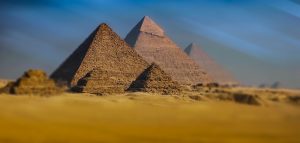Discovery Channel Magazine: The Lasting Lure of Egypt
Euromoney: What Zain Bahrain’s Modest Debut Says About Bahrain
1 November, 2014Cerulli Asia-Pacific Edge: Four Sovereign Wealth Funds With Little in Common
1 November, 2014Discovery Channel Magazine, November 2014
The heat is stuffy and stifling in the low and narrow tunnel as Howard Carter, an English archaeologist, levers out stones from a sealed, underground doorway. He calls for a candle, to check if there are foul gases coming from the other side; it’s been sealed off for more than 3,000 years, after all. Behind him, three men and a woman are waiting, silent but breathless. Carter pulls a few more stones out and peers in, waiting for his eyes to become accustomed to the candlelight. There is a pause; a long one. Behind him Lord Carnarvon can take it no more. “Can you see anything?” he asks, anxiety in his voice; he’s the man who’s funded this dig, this search that has lasted almost a decade in the dry Egyptian rock.
“Yes,” says Carter. “Wonderful things.”
It is the greatest moment in modern archaeology. Carter and Carnarvon have found the tomb of Tutankhamun, whom the world will come to know as the Boy King; the last of the pharaohs to be discovered in the Valley of the Kings, where 500 years-worth of Egyptian rulers were entombed from the 16th to the 11th century BC. It is a moment that will have a number of knock-on effects. It will enrapture the world, whose people will embrace ancient Egypt into their reading, their art, their decoration, their fashion. It will stand as the greatest archaeological find of modern times, increasing dramatically our understanding of one of history’s most revered cultures. It will bring to an end the uneasy era of the tomb excavator, since it is clear that no other find like this remains to be unearthed. And it will be followed, at various stages, by the deaths of many involved – Carnarvon within six weeks, Carter not until 1939, but with the rest of his life having been subsumed to the burden of cataloguing his finds – to the point that to this day, people share stories about a curse.
Today, whenever we look back upon that era of excavating the tombs of the Pharoahs, we think of Carter, though really he was the last in a long line of plunderers. It starts, arguably, with the Egyptians themselves. “Certainly, most of the tombs in the Valley of the Kings had been plundered in antiquity in Ancient Egypt itself,” says Dr Paul Collins, who is sitting with Discovery Channel Magazine in a book-filled office of the Ashmolean Museum in Oxford. Collins is the Jaleh Hearn Curator for Ancient Near East at the Ashmolean, which makes for a hell of a business card; he’s also the co-curator of a new exhibition on the discovery of Tutankhamen.
“We know that because the Greeks and the Romans talk about visiting the tombs,” Collins says. “They were great tourist attractions to the Romans, particularly when they occupied Egypt, and the graffiti all over these tombs in Latin and Greek shows they were as intrigued by them as we are. But, even then, they were empty.”
This is the thing about Ancient Egypt: the sheer scale of its distance in time from us, and the extraordinary period that it covered. When Tutankhamen was around, he would have been looking at the Pyramids like the British look at the Tower of London: they would have been more than a thousand years old, ancient and mysterious and weird. “Long abandoned by their priests, they lay open and stripped of their contents, their precious mummies vanished,” writes Joyce Tyldesley in Egypt: How a Lost Civilisation Was Discovered. “At their feet crouched the once-mighty Sphinx, now buried up to his noble neck in windblown sand. Pyramids were out of fashion. Kings were being buried in secret rock-cut tombs in southern Egypt, and the northern royal cemeteries were curiosities – tangible reminders of a vanished, almost mythical age.”
To read more, contact me or Discovery Channel Magazine
